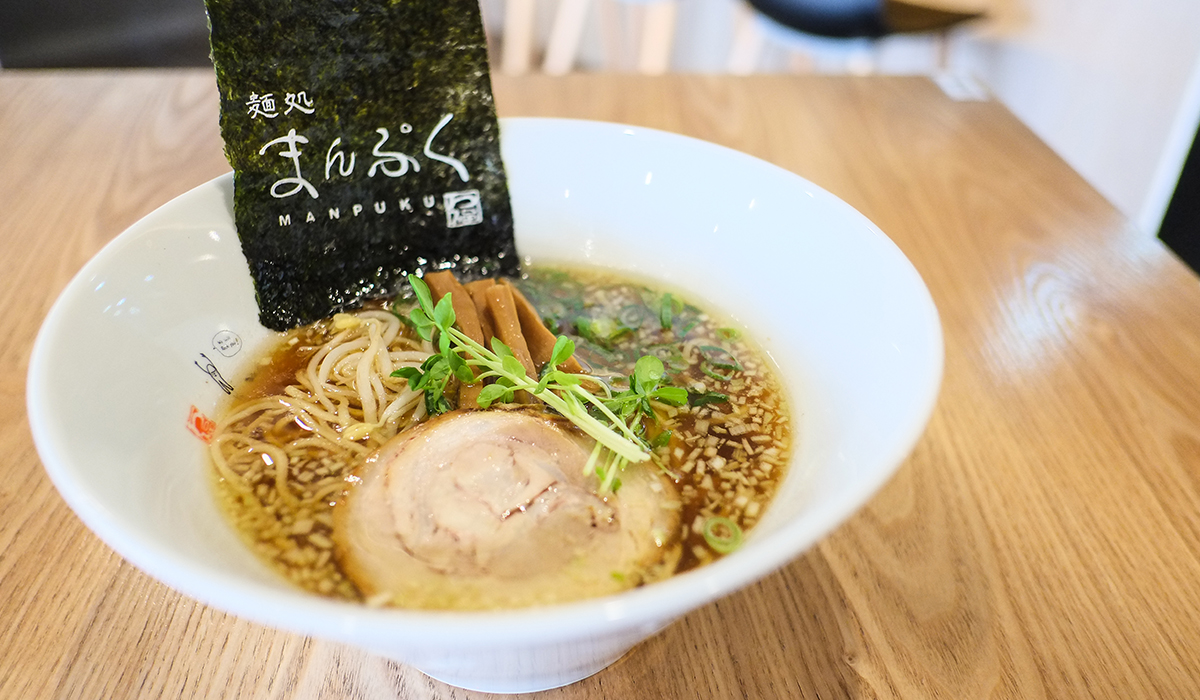
Picture: Manpuku gets their nori sheets stamped with their shop name, it’s very unique!
My first experience with seaweed, like many other peoples’, was sushi. Salty and kind of sweet, nori is the best known seaweed used in Japanese food. You might be surprised that although you’ve probably eaten seaweed in other forms, it’s not actually the same type of seaweed! The second type of seaweed I ate, I didn’t even know it was seaweed.
It doesn’t help that in English we don’t differentiate between different seaweeds. In Japanese, common seaweeds have different names, while kaiso is the generic term. There are around 6 common types of seaweed used in Japanese cuisine, and of course many regional specialties which are not well known amongst the general population. Let’s go through a few!
Picture: ao-nori is used to garnish okonomiyaki
Nori
Well known as the green wrapping of your sushi rolls, nori is a dried seaweed that is shredded and hung on drying racks, kind of like in paper making processes. Within nori, however, there’s actually three different types.
Picture: wakame is used in miso soup, which is found with most Japanese meals.
Wakame
When you drink miso soup with seaweed in it, that seaweed is wakame. It’s also sprinkled over onigiri (unlike nori which is used more like a wrap than a topping), and in hot pots and some types of salads. Fresh wakame is almost impossible to find outside of Japan (and if you do find it, it’s extremely expensive) so unfortunately we have to settle for dried wakame.

Picture: konbu is used as an ingredient in dashi stock, but is unavailable in Australia.
Konbu/Kombu
This is probably the most vital of all the seaweeds, but practically unknown in Australia. Due to import restrictions (reason: iodine content is too high) we can’t get konbu here in Australia. In Japan though, it’s used to make dashi stock. Dashi is used in almost every single Japanese dish, so it’s one of the things that make people say “it doesn’t taste the same as in Japan” – simply because the restaurants here are not allowed to import this ingredient.
Upwards of 90% of the konbu in Japan is cultivated in Hokkaido. Apart from dashi, it’s also eaten pickled, served with sashimi, or as a tea.

Picture: credit. Anmitsu is a popular Japanese dessert made up of azuki, mochi, agar jelly, and ice cream. There’s many different varieties of it.
Kanten
This one isn’t eaten as seaweed. Instead, agar is released from the plant when it’s boiled, collected, and used as an ingredient. Similar to gelatin, it is used as a setting agent (and it’s also a vegetarian/vegan substitute for gelatin!). You might be familiar with this one from high school science, if you remember what an agar plate is then the answer is, yes! It’s the same agar.
Used mostly in desserts (in Japan, red bean jelly is a traditional sweet that uses kanten), it can also regulate digestion thanks to being roughly 80% fiber. There’s even such a thing as the kanten-diet as eating it makes you feel fuller, people who want to lose weight are increasing their consumption of it. Anmitsu is another Japanese dessert that uses kanten.
There are many other seaweeds like hijiki which is used in broths and stews or eaten with tofu, and all the regional seaweeds that are used locally. What they all have in common though, is some great health benefits. Seaweeds are alkaline, which is good for balancing the acidity of your body (it can counteract the bad things we eat and drink like soft drinks and alcohol). It’s also rich in calcium, magnesium, and iodine. Previously mentioned fiber, but also vitamins A, B, C, and E, essential amino acids, omega-3, and high in protein.
For many people, seaweed isn’t appetising. But really, once you take the first bite, it just tastes like whatever flavour has been put on it! If you’re too squeamish about seaweed to try sushi, we recommend you just close your eyes and take a big bite. You’re really missing out on a great food!